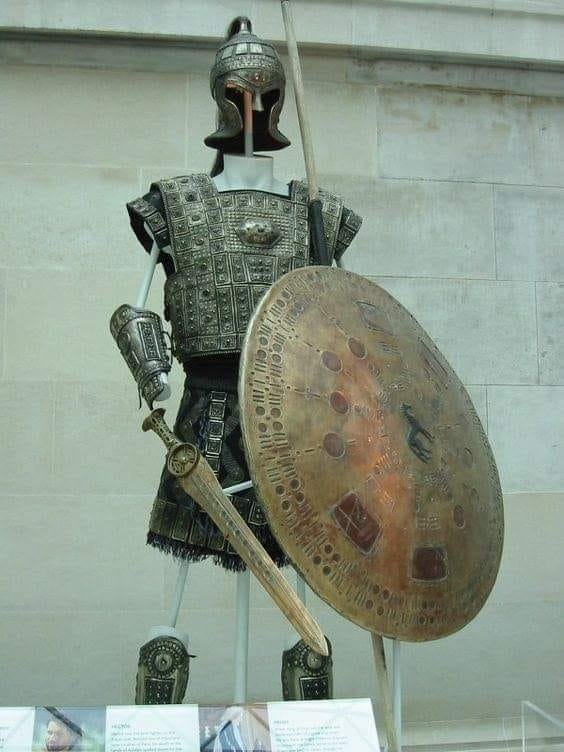The British Museum in London offers an extraordinary journey into the legendary city of Troy, a place that has captured human imagination for thousands of years. This captivating exhibition seamlessly combines archaeological discoveries with Homer’s epic storytelling, creating a rich narrative that bridges the realms of myth and historical reality. Visitors are invited to delve into the mysteries of this ancient city, exploring its layers of history, cultural significance, and enduring legacy.
At the heart of the exhibition is a treasure trove of artifacts unearthed during Heinrich Schliemann’s groundbreaking excavations. These items, ranging from delicate pottery and intricately crafted tools to ancient weapons and exquisite jewelry, transport visitors back to the Bronze Age. They provide a vivid glimpse into a once-thriving civilization that was far more than the backdrop of mythic tales. Each artifact reveals an aspect of daily life in ancient Troy, painting a picture of a vibrant society that stood at the crossroads of trade and cultural exchange.

The exhibition also highlights the meticulous work of archaeologists like Wilhelm Dörpfeld and Carl Blegen, who uncovered multiple layers of the city’s history. These layers reveal how Troy evolved, flourished, and was rebuilt over centuries, often rising anew from the ashes of destruction. Through these discoveries, visitors gain insight into the resilience and complexity of a society that thrived in a strategically vital location. Every object tells a story, shedding light on the lives of people who inhabited this legendary city and their contributions to ancient culture.
The centerpiece of the exhibition is the Trojan War, an iconic event that has long blurred the lines between myth and history. The display brings Homer’s Iliad to life with stunning representations of legendary figures such as Achilles, Hector, and Helen. These characters, immortalized in art and literature, are showcased through various artistic mediums, allowing visitors to connect with their timeless narratives. One of the most striking exhibits is the infamous wooden horse, a symbol that invites deeper reflection on the intersection of historical fact and mythological fiction.
The exhibition raises profound questions about the historical authenticity of the Trojan War. By juxtaposing archaeological evidence with Homer’s epic accounts, visitors are encouraged to consider the ways storytelling shapes our perception of the past. How much of the Iliad is rooted in truth? Can myths carry elements of historical reality? These questions prompt visitors to reflect on the intricate relationship between history and legend, challenging preconceived notions and sparking intellectual curiosity.
Beyond its historical and mythological significance, the exhibition delves into the cultural legacy of Troy. Through an impressive collection of artworks, coins, and manuscripts, the display illustrates how the myth of Troy has inspired generations of artists, writers, and leaders across centuries. From ancient Greece to the Renaissance and beyond, Troy has served as a wellspring of creative inspiration, embodying universal themes such as heroism, betrayal, resilience, and the complexities of human nature.
The exhibit also emphasizes the timeless relevance of Troy as a cultural symbol. It explores how the story of Troy continues to resonate with audiences today, offering lessons about human ambition, love, and conflict. By presenting Troy’s enduring impact on art, literature, and society, the exhibition underscores the city’s role in shaping the cultural and intellectual heritage of the world.
One of the most remarkable aspects of the British Museum’s Troy exhibit is its ability to bridge the past and present. This is not merely a display of artifacts; it is a sophisticated narrative that encourages visitors to reflect on how historical narratives are reconstructed and interpreted. The integration of archaeological findings with artistic and literary interpretations highlights the complexities of understanding ancient civilizations. It invites visitors to consider the challenges and triumphs of piecing together history from fragmented evidence, emphasizing humanity’s enduring quest for knowledge.
Troy emerges not just as an ancient city but as a testament to humanity’s boundless curiosity and creativity. The exhibition celebrates the ingenuity of archaeologists and storytellers who have preserved the memory of this legendary city, ensuring that its story continues to inspire future generations. It reminds visitors of the importance of cultural preservation and the role of history in shaping our collective identity.
For those who are passionate about ancient history, mythology, or the intricate tapestry of human civilization, this exhibition is a must-see. It offers a rare opportunity to immerse oneself in the allure of Troy, exploring its rich history and enduring cultural significance. Through a thoughtful blend of archaeology, art, and storytelling, the exhibit provides a holistic view of Troy’s legacy, ensuring that its timeless allure remains as captivating as ever.
The British Museum’s Troy exhibit stands as a celebration of human creativity and the enduring power of storytelling. It invites visitors to step back in time, exploring the myths and realities of a city that has shaped the cultural imagination for millennia. From the vibrant artifacts of the Bronze Age to the timeless tales of Homer, Troy continues to captivate and inspire, reminding us of the profound connections between past and present.
In conclusion, the Troy exhibit offers a unique and immersive experience that transcends traditional museum displays. It is a journey through time, mythology, and human ingenuity—a tribute to the archaeologists, artists, and storytellers who have kept the memory of Troy alive. For anyone seeking to explore the depths of ancient history and the enduring allure of myth, this exhibition is an unmissable opportunity to connect with one of the most legendary cities of all time.





